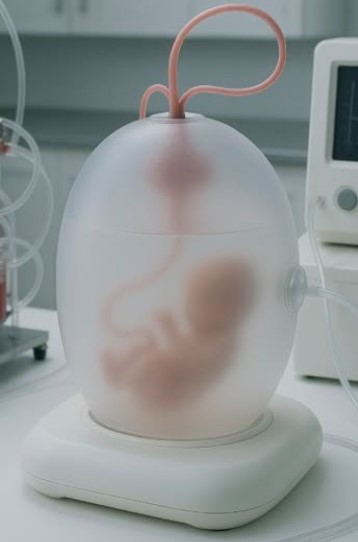
In a quiet corner of Japan, scientists have achieved a groundbreaking medical milestone that could redefine the boundaries of life, birth, and medicine. Researchers have successfully developed the world’s first fully operational artificial womb — not a concept, not a prototype, but a functioning system capable of sustaining life outside the human body.
This achievement, which might sound like something pulled from the pages of a science fiction novel, is very much real. Inside this advanced biotechnological chamber, all the vital components of a natural womb are carefully simulated. Oxygen, nutrients, waste filtration, and even the nuanced biological rhythms of a living placenta are mimicked with precision.
This innovation is more than a marvel of engineering. It represents a potential lifeline for thousands of premature infants who are born too early to survive outside the womb with current medical support. For them, this technology could mean the difference between life and death. Additionally, it opens the door to revolutionary alternatives for families dealing with infertility or for individuals with uterine health complications.
A Mechanical Miracle
The artificial womb replicates the environment a fetus would normally experience during gestation. Within the capsule, developing embryos are suspended in a protective liquid that simulates amniotic fluid, while oxygen and nutrients are continuously delivered. Waste is also efficiently removed, closely mirroring the functions of a natural placenta.
What makes this development truly extraordinary is the system’s ability to not just sustain life but to promote development. It could serve as a bridge for premature infants who are born before their lungs or organs have fully matured — giving them a secure and stable environment to continue growing.
The Implications for Medicine and Parenthood
This advancement signals a monumental shift in how we think about birth, reproductive health, and the role of the human body in creating life. For neonatal care units, such technology could revolutionize the treatment of at-risk newborns. Instead of relying solely on incubators, hospitals might one day offer artificial wombs as a safer and more comprehensive solution.
For parents facing the heartbreak of repeated miscarriages or those unable to carry a child due to medical conditions, this innovation could provide a new avenue to experience parenthood — one that doesn’t rely on surrogacy or adoption.
However, with every stride in scientific progress comes profound ethical considerations. What are the long-term developmental implications for babies born entirely outside the womb? How might this reshape our cultural and legal definitions of motherhood, birth, and family? Could this open the door to commercialized human gestation or “designer babies”? These are no longer hypothetical questions — they are urgent matters that societies must begin to address.
A Future on the Edge of Possibility
Japan’s artificial womb is more than just a technological marvel; it is a symbol of how rapidly science is expanding the limits of human potential. But as with all powerful tools, its future use will depend heavily on how it is governed, understood, and integrated into society.
The unveiling of this technology comes at a time when birth rates are declining in many countries, infertility is on the rise, and healthcare systems are under increasing strain. In that context, the artificial womb could offer hope — not only for individuals but for entire nations facing demographic challenges.
Yet, this hope must be tempered with caution. As researchers and policymakers navigate the uncharted waters of life created outside the human body, the choices made today will shape the ethical and medical landscape for generations to come.
In this historic moment, we are reminded that science doesn’t just answer questions — it asks new ones. The artificial womb is not simply a machine. It is a mirror, reflecting both our aspirations and our uncertainties about what it means to create, nurture, and protect life.
One thing is undeniable: we have entered a future that no one is fully prepared for. And the journey has only just begun.
Source: DesignBoom, Empa Research Updates


